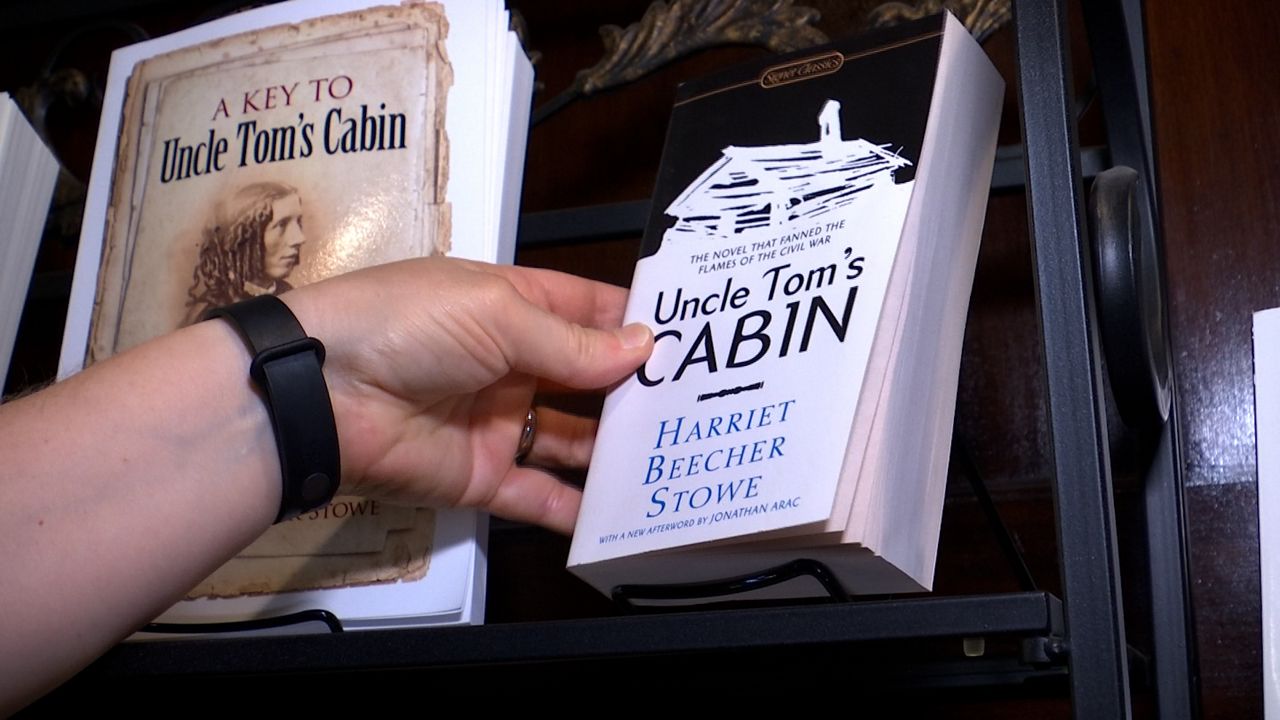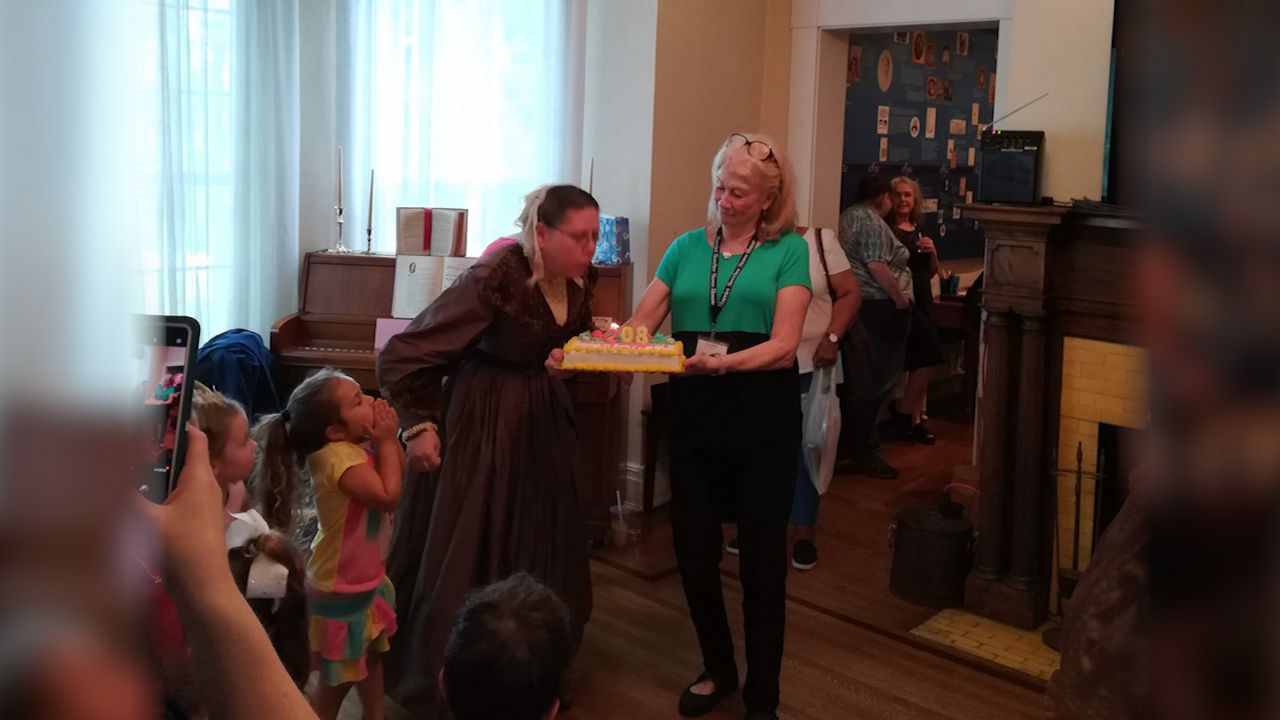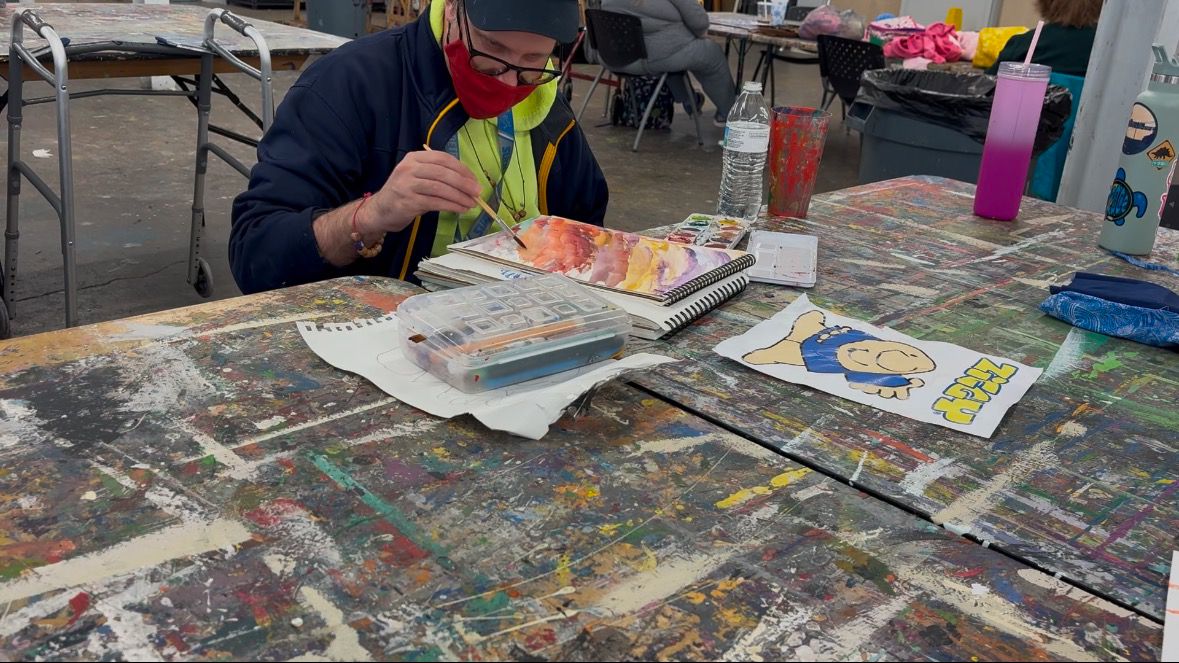CINCINNATI — After penning her notorious novel 170 years ago, Uncle Tom’s Cabin, the city that inspired it continues to celebrate the legacy of Harriet Beecher Stowe.
Every year, hundreds from across Cincinnati, the country, and the world stop by her former home in the city’s Walnut Hills neighborhood to learn how her time in town shaped Beecher Stowe’s understanding of slavery and the abolition movement.

Mid-June marks the biggest celebration as the author’s birthday serves as an open house for Beecher Stowe’s former dwelling now turned museum. This year, the author turns 210.
Christina Hartlieb, the executive director of the facility, said the annual birthday celebration is a time for the neighborhood and the city to get a look at this time capsule inside Cincinnati before the Civil War.
“It is important for people to see and understand how the past really influences the present,” she said.
Beecher Stowe grew up in New England but moved to Cincinnati as a young woman when her father became president of the Lane Seminary. There she found a front row seat to history.
“Cincinnati stood at a crossroads and Cincinnati itself has always kind of been a northern city and a southern city,” she said.
The seminary students were heavily involved in abolition activism, while the school board and community business leaders with an economic interest in slavery urged Beecher Stowe’s father to intervene.
Hartlieb said many of those conversations took place in her father’s office for Beecher Stowe to hear.
“This room really harbored all that discussion and debate about those debates on abolition,” she said.

In the museum house, you can see books and notes from the students as well as descriptions of the different abolition arguments from the time and an explanation of how they influenced Beecher Stowe.
In the living room, you’ll see the abolitionist pamphlets and newsletters Beecher Stowe began writing for, and descriptions of the people she met in the city. Hartlieb said the author began conducting interviews with escaped slaves and people involved in the underground railroad, many of those stories would make their way into Uncle Tom’s Cabin.
Stowe began writing the novel after she moved out of the city with her husband, publishing it chapter by chapter in an abolitionist newspaper called the National Era. It started making waves when she published it in full in 1853.
“After reading Uncle Tom’s Cabin, that’s when people really start thinking differently and it does change public opinion about the issue of slavery,” Hartlieb said.
Now the Stowe House is dedicated to telling that story behind the story, and Cincinnati’s role in shaping it and Hartlieb said hosting the annual birthday party is one of their largest outreach efforts.
“We invite the neighborhood and our own members and anybody else who wants to learn more about Harriet and more about the legacy that she created here in Cincinnati,” she said.
In 2020, the party went virtual, but for 2021, it was back on though this time, almost entirely outdoors.
It still included its usual programming, such as music, re-enactors, and tours but this time with limited capacity tours of the museum by appointment only. Hartlieb said her staff and volunteers have also been busy putting together new offerings.

“We’re unveiling our outdoor exhibit,” Hartlieb said, showing off one of the panels.
The new exhibition shows how the Walnut Hills neighborhood developed during Beecher Stowe’s time in the city.
Though it looked a little different, Hartlieb said she wanted this event to serve as the usual open house, reminding the neighborhood what the Stowe House has to offer and that it’s available for any visitor hoping to learn a little more history.
The museum is open for private tours on limited hours through June. Hartlieb hopes to open the Beecher Stowe House for normal operation hours by the end of July.









